Liverpool, under Jürgen Klopp, have been quite consistent at giving young players a chance in and around the first-team if they have shown promise and potential. Trent Alexander-Arnold stands out as the best example of this, with the 22-year-old having become one of the best right-backs in the Premier League since his senior debut in October 2016, while Curtis Jones looks likely to become a big part of Liverpool’s squad in the coming years. This season has seen Rhys Williams, Neco Williams and Nathaniel Phillips, along with Jones, being used quite regularly, albeit due to a crippling injury crisis. Thus, there is definitely a pathway to the first-team at Anfield under Klopp for young players, and the latest prospect who will be hoping to make this journey is Harvey Elliott, the 18-year-old who is on loan at Championship side Blackburn Rovers this season.
Elliott has been a revelation in the second tier, having notched six goals and 11 assists at the time of writing. For context, he is the second-highest assist provider in the Championship, only behind Emiliano Buendia of Norwich City. Blackburn may be ending the season comfortably in mid-table, but Elliott has been one of the best players in the league, and this has opened up the question of whether he will be a part of the Liverpool first-team next season. Given the Reds’ struggles this season, it is not unrealistic to imagine that a player like Elliott could definitely provide a spark to Klopp’s side. However, the likes of Harry Wilson, Rhian Brewster, Ryan Kent and Ki-Jana Hoever all had to move on from Anfield after struggling to break into the team, with varying levels of success since then. While Elliott is unlikely to be sold this early, another temporary move away from Liverpool may be in the works for next season as well.
This scout report will look at Elliott’s traits, strengths and weaknesses in a bid to try and understand whether he could be a good fit for the Liverpool squad next season.
Playing profile
Elliott is a left-footed winger, standing at 5’7” and weighing 67 kgs, who primarily plays off the right flank, but has been used on the left, behind a striker as well as up front by Tony Mowbray this season. His heat map reflects how he operates largely on the right, looking to come inside onto his preferred left foot.
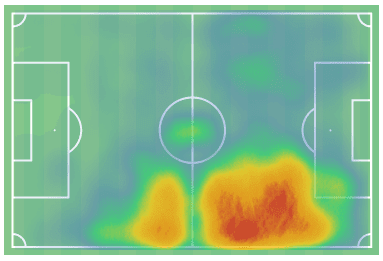
The 18-year-old largely prefers to stay wide on the right to offer width to Blackburn, and this also results in him often being isolated 1v1 with the opposition left-back if the ball is switched out to him. As our analysis will show, Elliott is quite a creative player, and not a traditional winger, in the sense that he is neither a high-volume crosser nor a high-volume dribbler. The former Fulham player will look to create through incisive passes into dangerous areas, and therefore function akin to a wide playmaker. He could therefore be a point of difference in the Liverpool attack, and does bear quite a lot of similarities to Xherdan Shaqiri, who could be on his way out of Anfield in the summer.
Statistical comparison
Before looking at in-game examples of Elliott’s traits and abilities, it will be quite interesting to look at his statistical output this season in the Championship for certain relevant metrics, in comparison with other wingers, to understand just how good he has been. These comparisons will also make certain traits and tendencies come through, which will help us understand whether he could be a good fit for Liverpool as well.
All statistics have been taken from Wyscout, with per 90 numbers being used unless otherwise noted. Our data set includes players who have played a majority of the season on either flank, while we have also only included players who have played a minimum of 1000 minutes, to provide enough of a sample size for our comparisons to be valid.
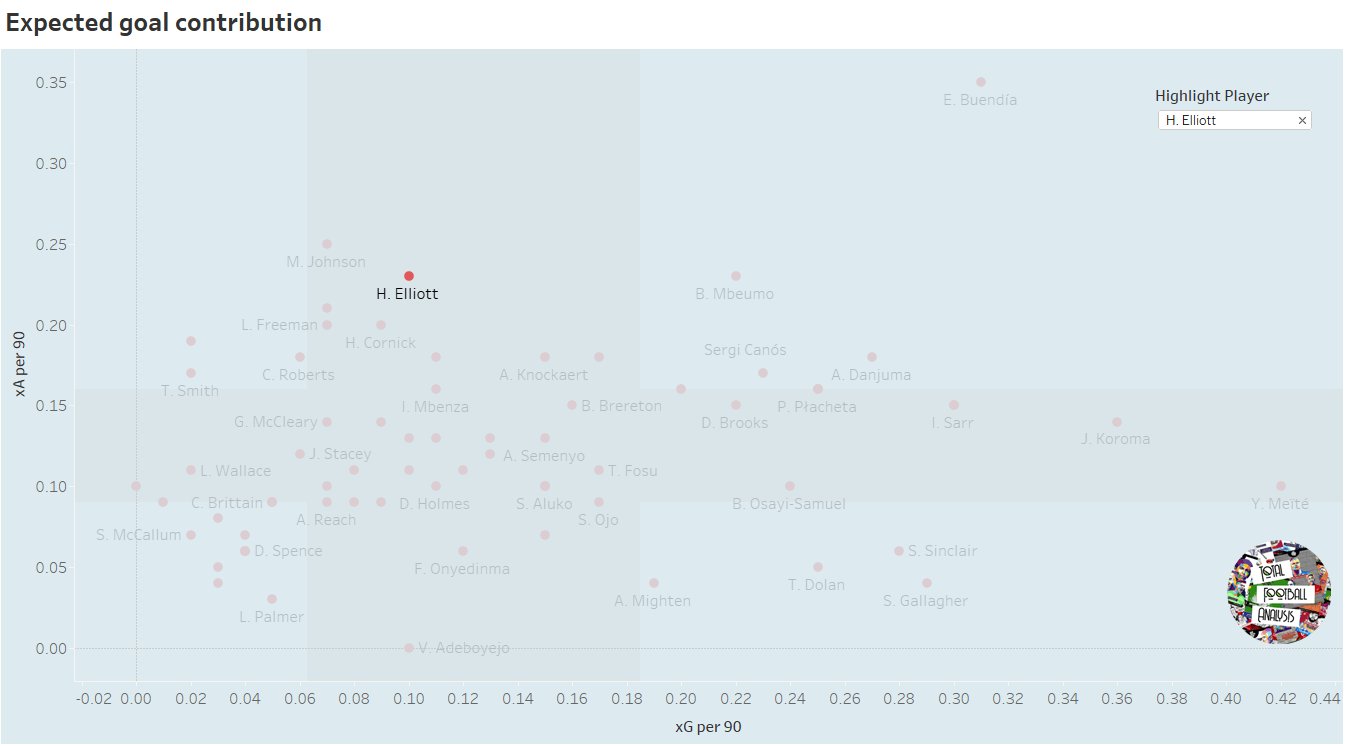
Our first chart looks at expected goals and assists per 90 to provide an understanding of how likely it has been for these players to score or assist per 90 minutes this season. We can already see how Buendia has been at a level of his own in the Championship, with an xG+xA per 90 total of 0.66 that has been well clear of any other winger. Bryan Mbuemo, Sergi Canos and Arnaut Danjuma are the only other wingers who are above average for both metrics, which shows just how difficult it is to consistently create chances for teammates as well as score goals. In Elliott’s case, he is well above the middle quartile for the league for xA per 90, at 0.23, but is around the middle for xG per 90, with 0.10. This is, of course, reflected in his actual goals (0.18 per 90) and assists (0.34 per 90) as well, and shows how Elliott is more of a creator than a goalscorer. In fact, his xA/90 total is the third-highest in our dataset, which is astonishing for a player who turned 18 this April.
It is also encouraging that he is outperforming both metrics in terms of actual output at the moment – we will need to see whether this trend continues as his season progresses, but consistent overperformance of expected totals is one of the hallmarks of world-class players, so this is a good first step in his career.
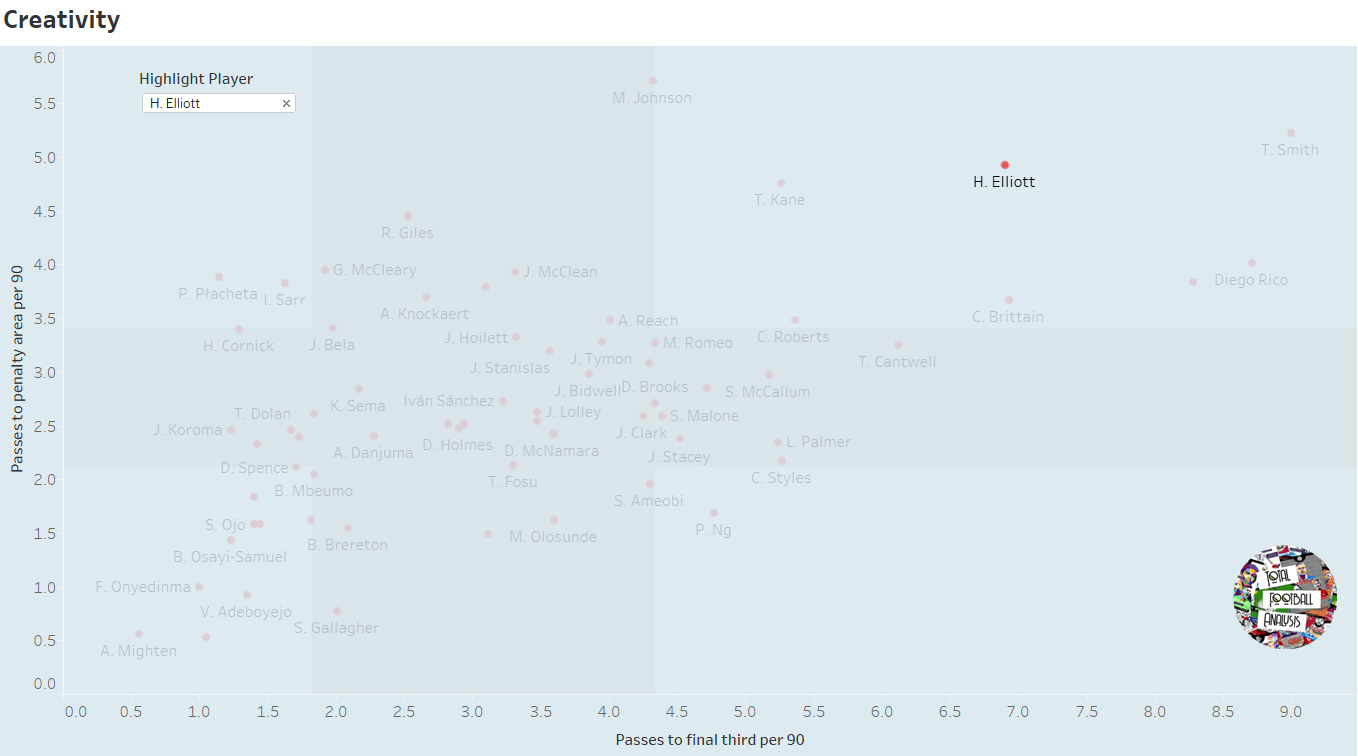
This chart should help explain why he has such high xA numbers this season. We have looked at passes to the final third and the penalty area per 90 this season, and Elliott has been well above the middle quartile for both these metrics. These are the sort of passes that can help create opportunities and break down defensive blocks, and the 18-year-old has been attempting more of them than most, if not all the other Championship wingers this season.
Thus, we can begin to see that Elliott is more of a wide playmaker who looks to create opportunities through his passing, and this could be quite a handy tool for Liverpool to have in their locker next season given the difficulty they have had breaking down teams at times.
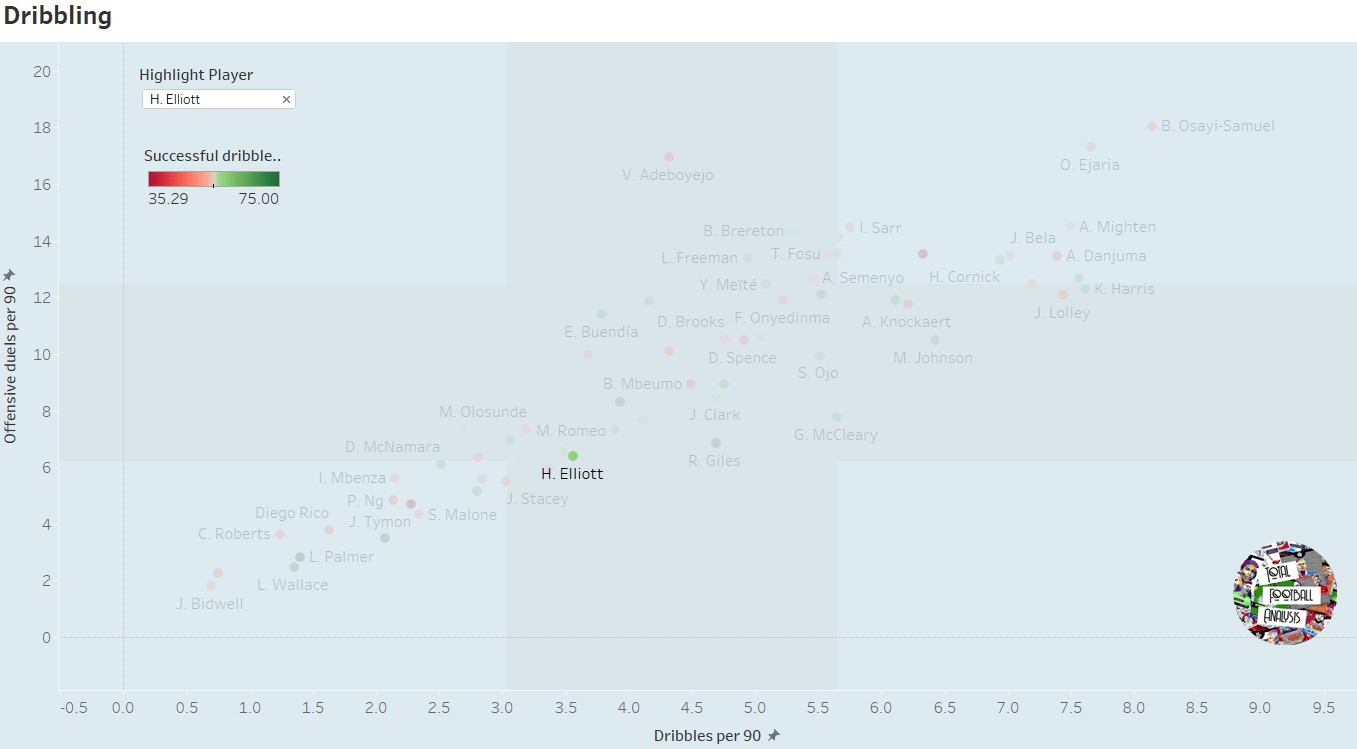
Our next scatter plot looks at dribbling performance – we have considered dribbles and offensive duels per 90, while the colour of the dot indicates dribbles success rate. It is immediately clear that Elliott is not a high-volume dribbler – he is in the middle quartiles for both offensive duels per 90 (6.39) and dribbles per 90 (3.56). It must be noted, however, that he is quite a successful dribbler, with a success rate of just over 58%. This indicates that Elliott is not the kind of player who will regularly look to beat his man, but he does possess the ability to do so should the need arise.
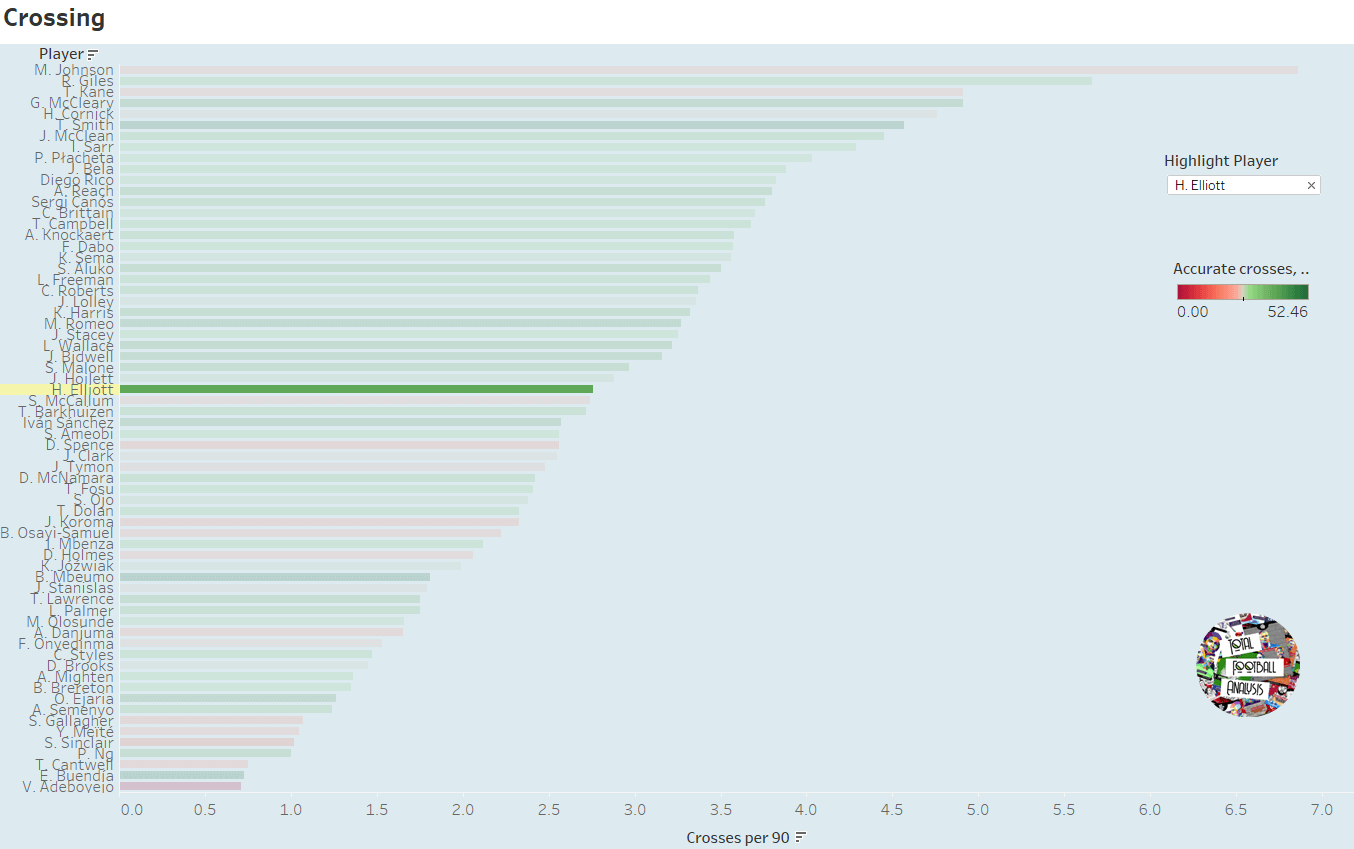
Our last chart looks at crossing, which is another important trait for a winger. We have ranked these wingers for crosses per 90, while the colour indicates their success rate. Elliott has averaged 2.76 crosses per 90 this season, which is bang on the league average as well, at a success rate of just over 39%. While this is a reflection of Blackburn’s style of play, it does also show that Elliott is not the type of player to attempt too many crosses, but he is relatively good at picking out a teammate in the box when he does do so. Again, this does fit in with Liverpool’s style of play, where it is the full-backs who cross from wider and deeper positions, leaving the wingers to move infield.
Our statistical comparisons have shown that Elliott is a player who is far likelier to create a goalscoring opportunity through a killer pass than by crossing the ball or going on a mazy run. We will now move onto in-game examples to provide further insight into this 18-year-old’s strengths, tendencies and weaknesses.
Positioning
We have already mentioned how Elliott will often stay out wide on the right when the ball is on the left to help create width and open up the opportunity for a switch in play.
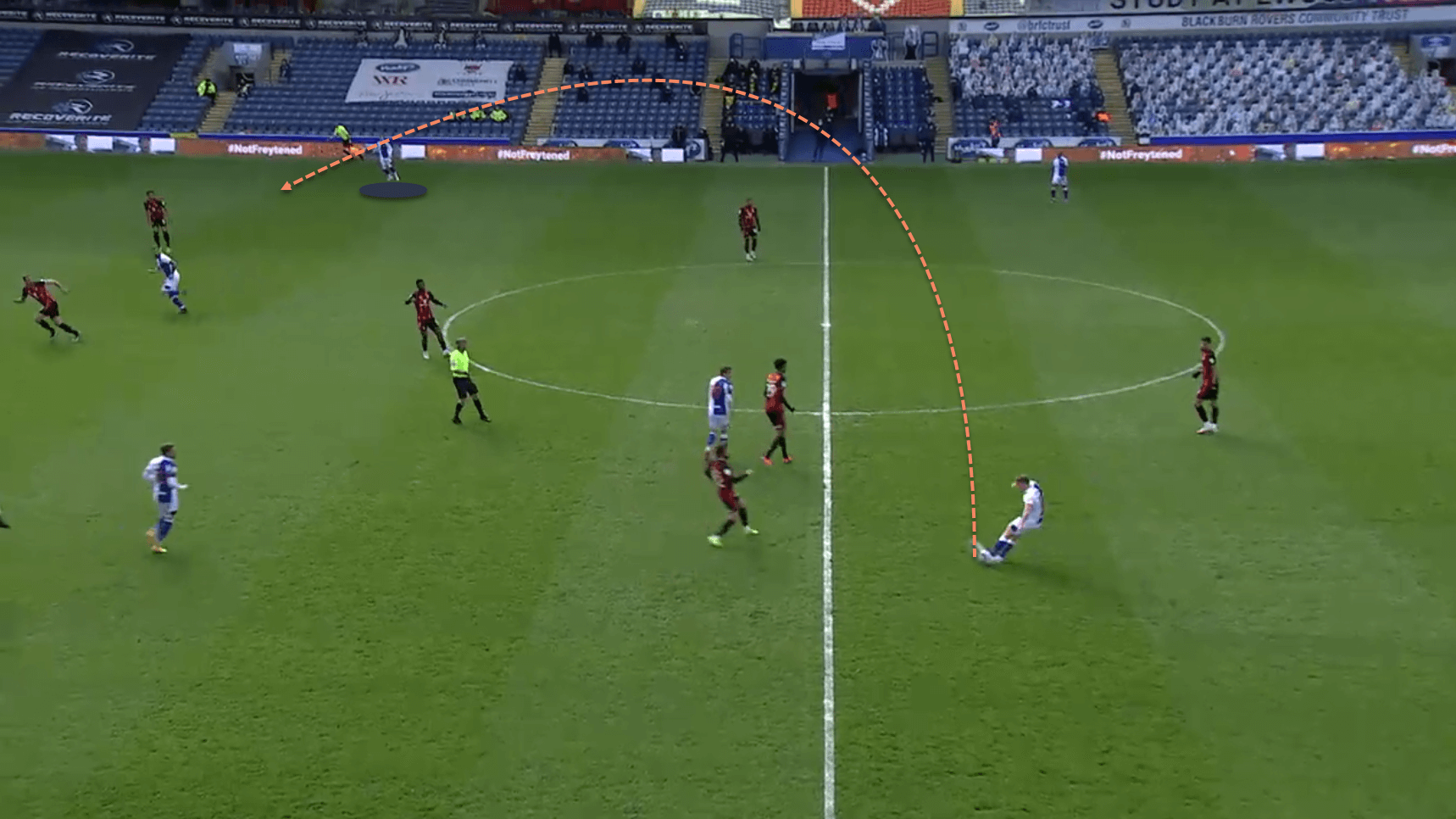
This is an example of that trait, against Bournemouth, where Elliott’s positioning allows Barry Douglas to find him in space with a switch in play.
This is also the case when the ball is on his flank – Elliott will often stay wide to receive with his back to goal on the touchline in order to play a simple wall pass back, and this also creates space infield instead for a teammate to make a run into, as we can see in the next image.
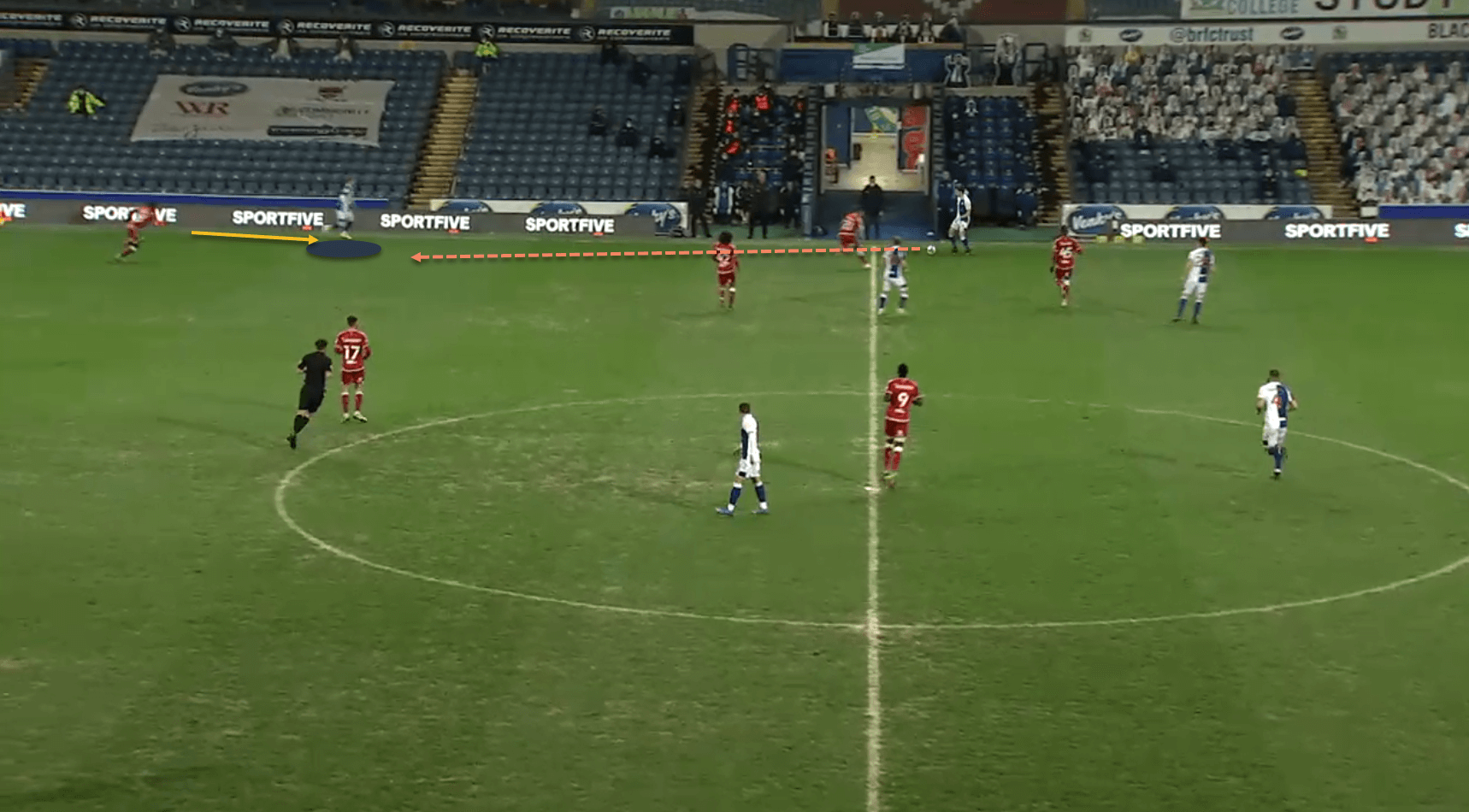
However, given that he is a left-footed player, he will also come infield to receive the ball, and this opens up space on the flank for the right-back to overlap. Looking at Liverpool, this is also how Mohamed Salah operates, to allow Trent Alexander-Arnold to overlap, and this is another example of a trait that could potentially help him fit into the Reds’ lineup.
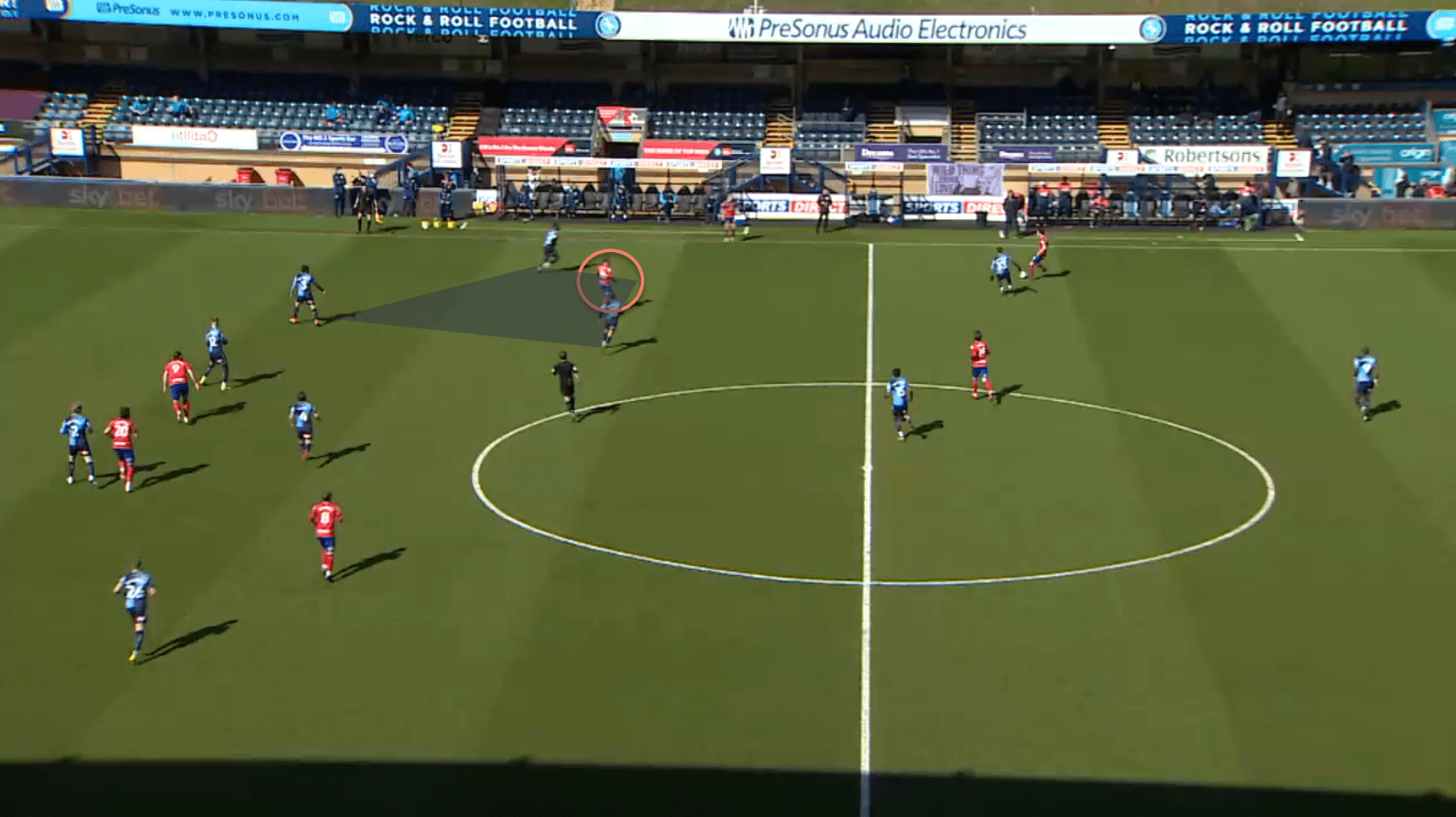
Elliott (circled) manages to drop into a more central position, in an area between the left-back, winger and central midfielder, and we can see how this could allow the Blackburn right-back to advance if the left-back gets attracted to him.
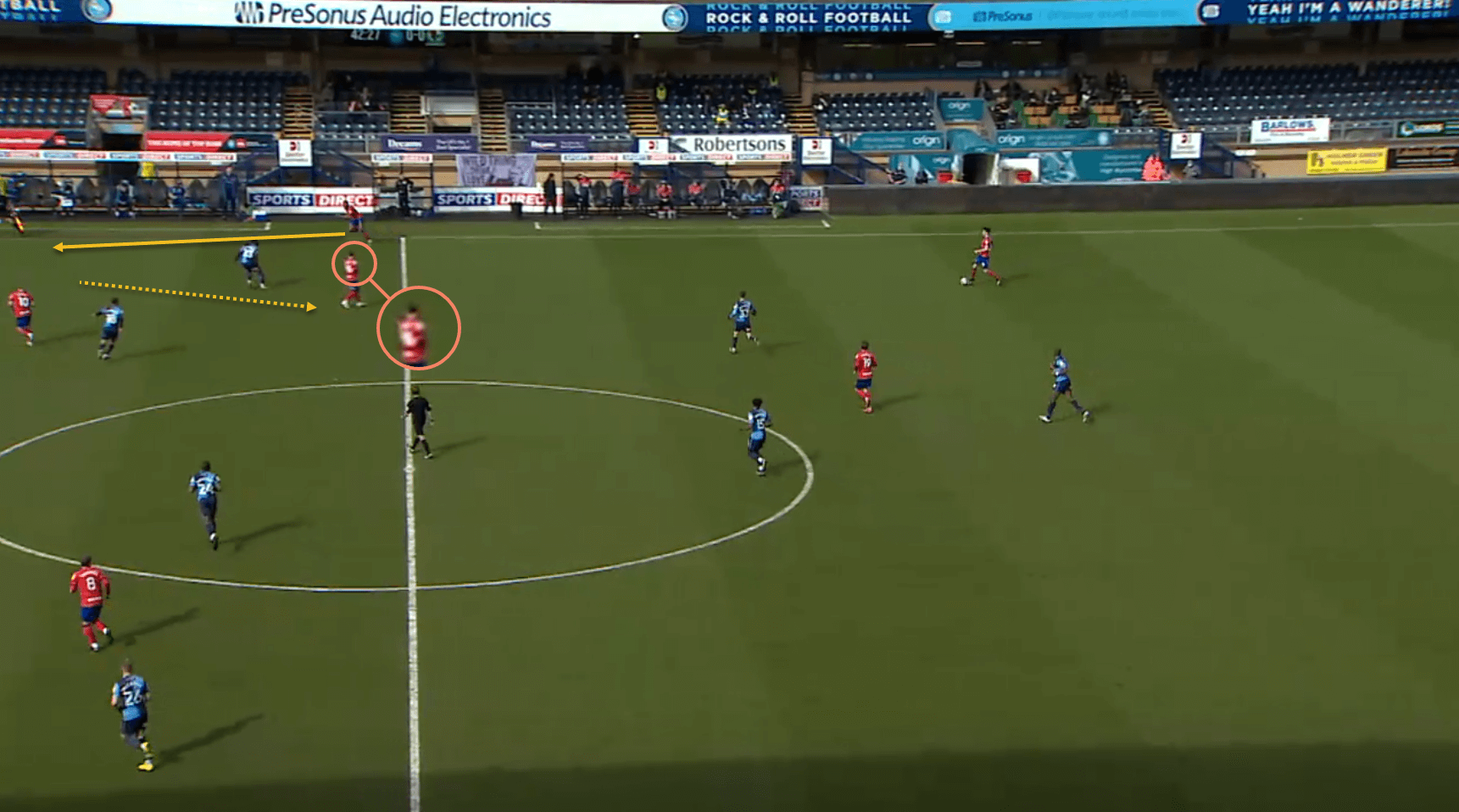
In fact, this next example from the same match highlights this tendency even more. Elliott has a look at his right-back when he drops in from the flank, and with the opposition player drawn towards him, the right-back now has a lot of space to run into.
Thus, we can see from these examples, as well as his heatmap provided earlier, that Elliott tends to operate between the touchline and the central spaces on the right. He will stay wide when needed, especially when the ball is on the opposite flank to create the opportunity of a switch in play. At the same time, he will drop into central areas as well to help out with build-up play, especially in the first two phases of possession, and this can create space for the right-back to overlap.
Passing and creativity
We have already seen the numbers on how effective and dangerous the 18-year-old has been as a creative threat this season. Elliott is extremely dangerous in transitions, as he is able to pick the right pass and set players through on goal, having notched a couple of assists in this manner already this season. The next couple of images highlight this.
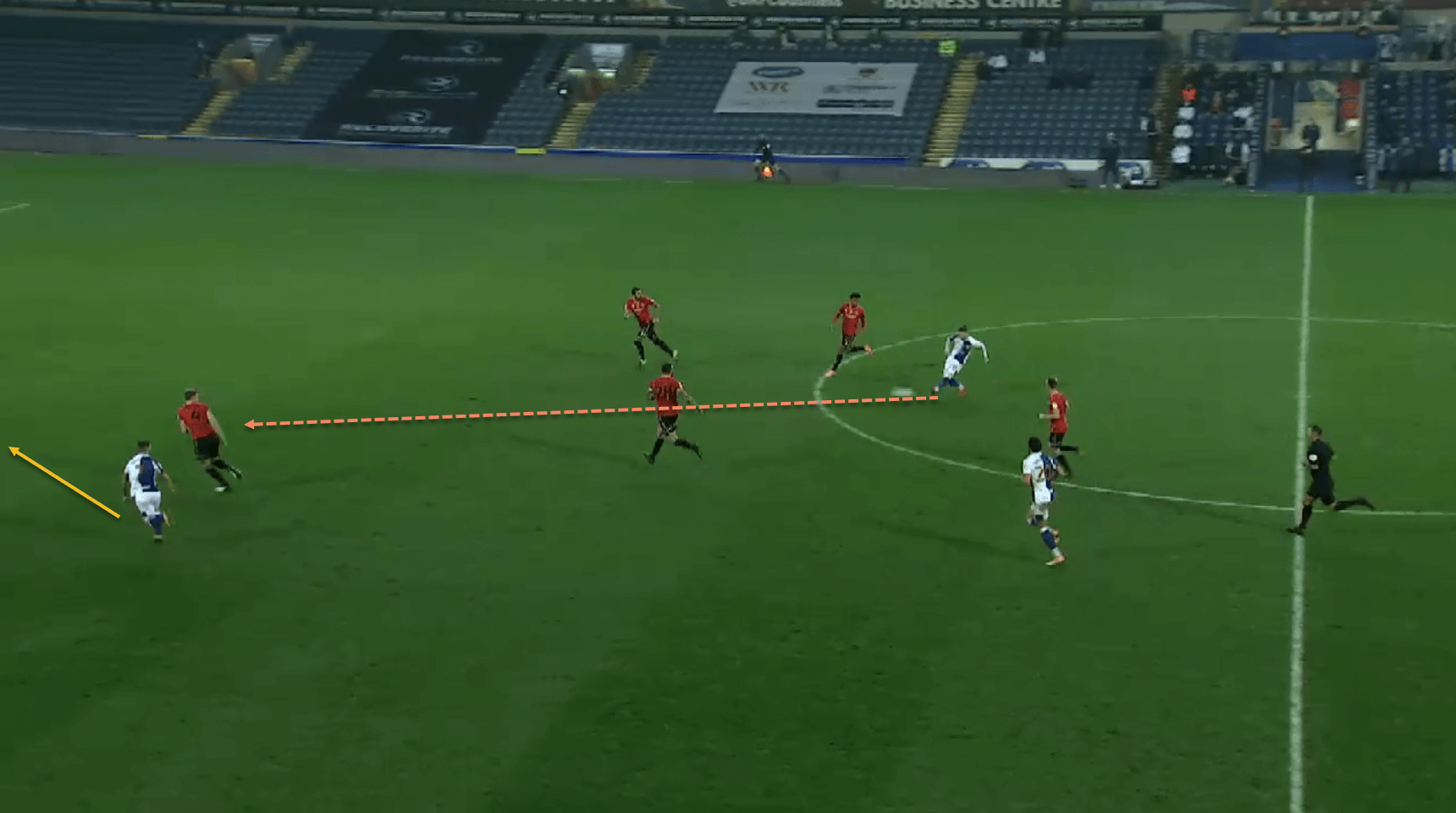
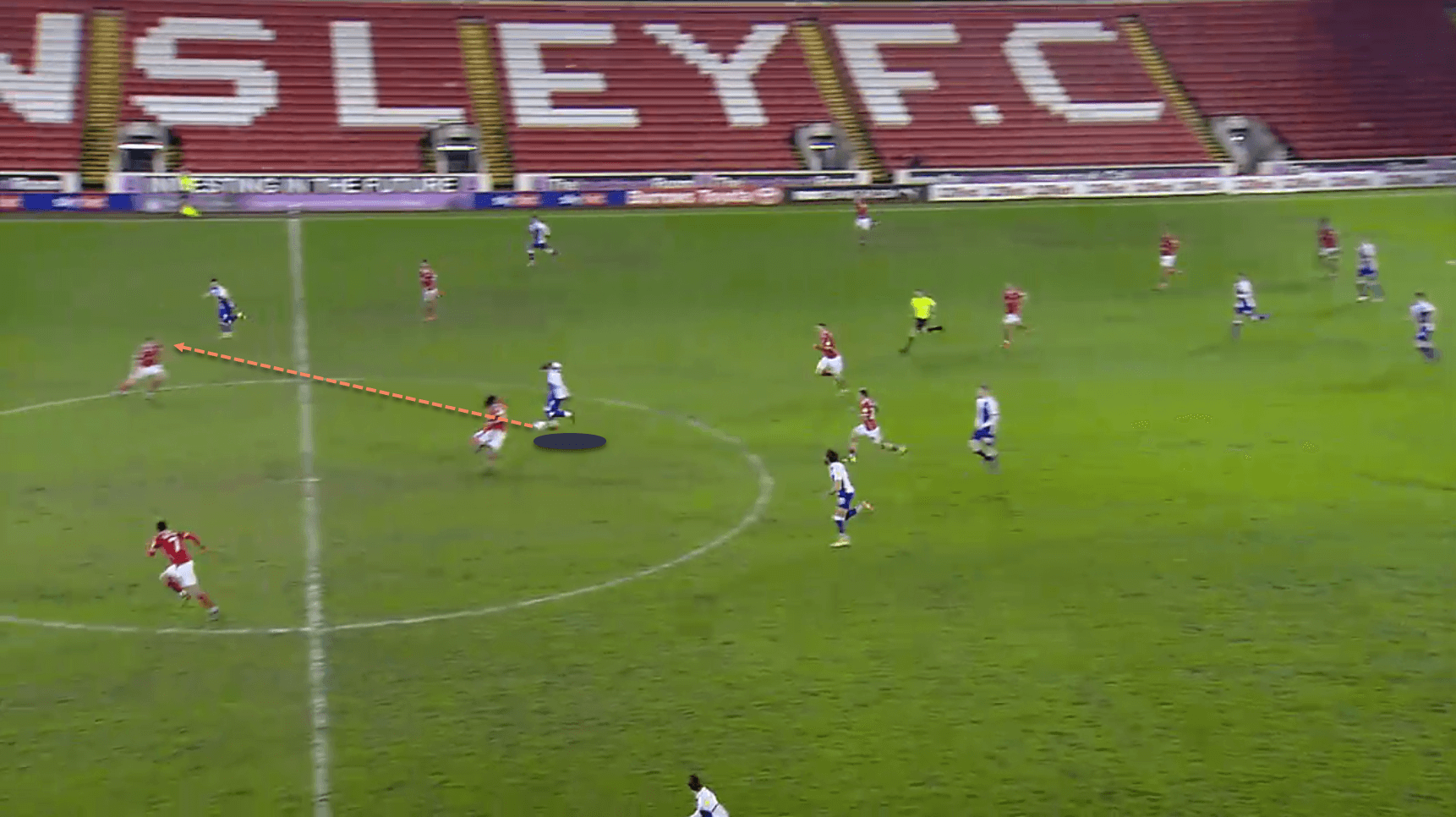
Note how Elliott is in a central position in both of these instances – this shows his willingness to roam infield, and means that he is often in a dangerous position to play such passes when Blackburn counter-attack.
When wide on the right, Elliott will often try to find teammates in the box by coming onto his preferred left foot and chipping or lofting passes towards them.
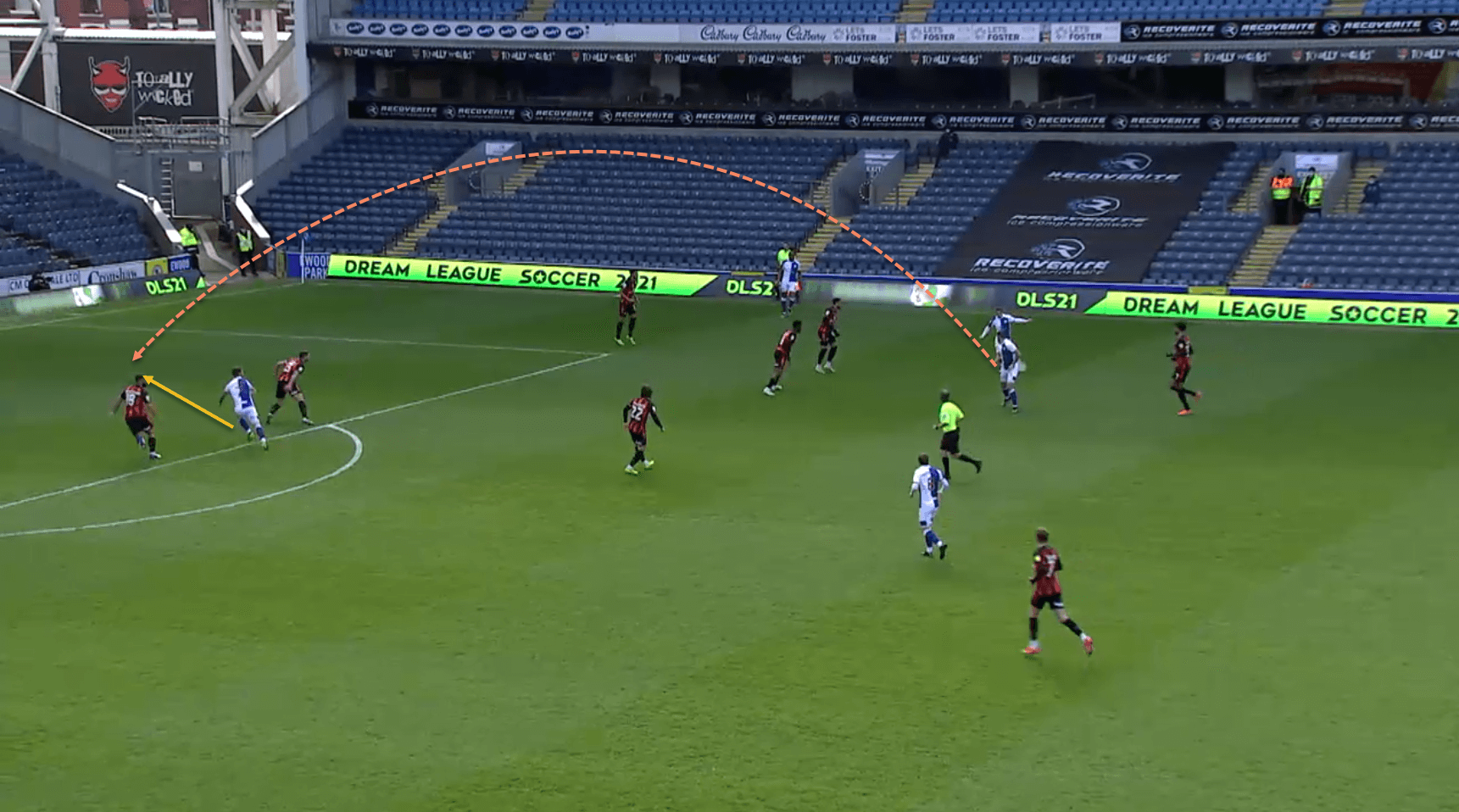
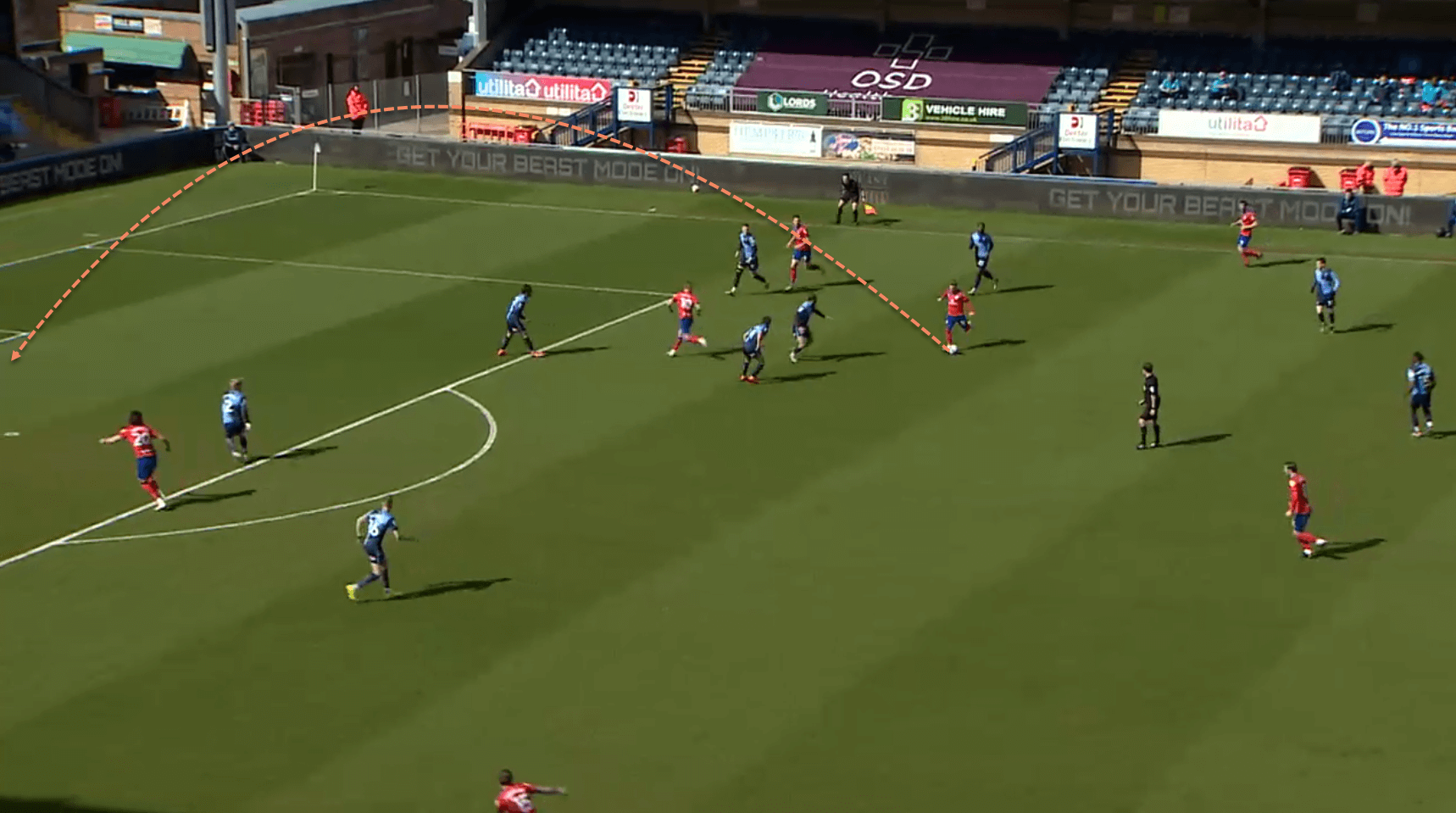
These examples show Elliott’s ability to find teammates making runs into the box from in and around the right half-space. These kinds of lofted balls into the box are a great way to try and break down defences, especially when combined with intelligent movement.
We have mentioned how Elliott has been used in central positions as well, and this example from the game against Norwich City, where he was played as the centre-forward, shows his playmaking abilities.
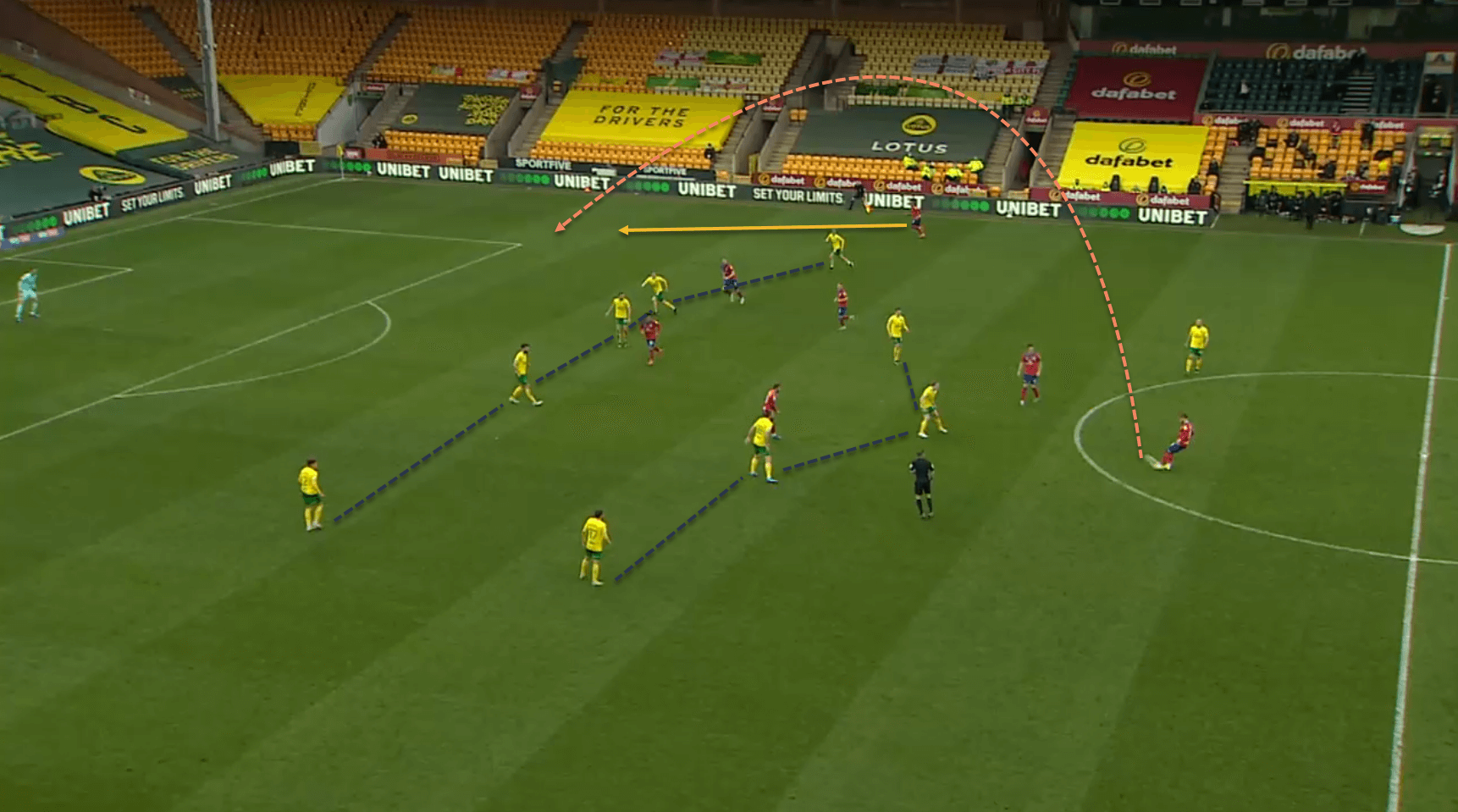
Even when on the right, Elliott rarely looks to make runs in behind, looking to receive the ball to his feet. This is the case when he is played centrally as well, with the former Fulham player dropping extremely deep, from where he is able to play passes like this one. This pass, out wide and behind the defensive line, shows the 18-year-old’s vision and passing ability, which can be an asset when he is out wide as well.
Crossing
Given that Elliott is a left-footed player, he rarely looks to go down the line and cross. As we have seen, he will usually check back onto his left foot and pass into the box.

However, when he does choose to go in behind and outside the full-back, the Liverpool loanee is quite capable of delivering with his right foot as well, with crosses from those positions usually being drilled in low into the box.
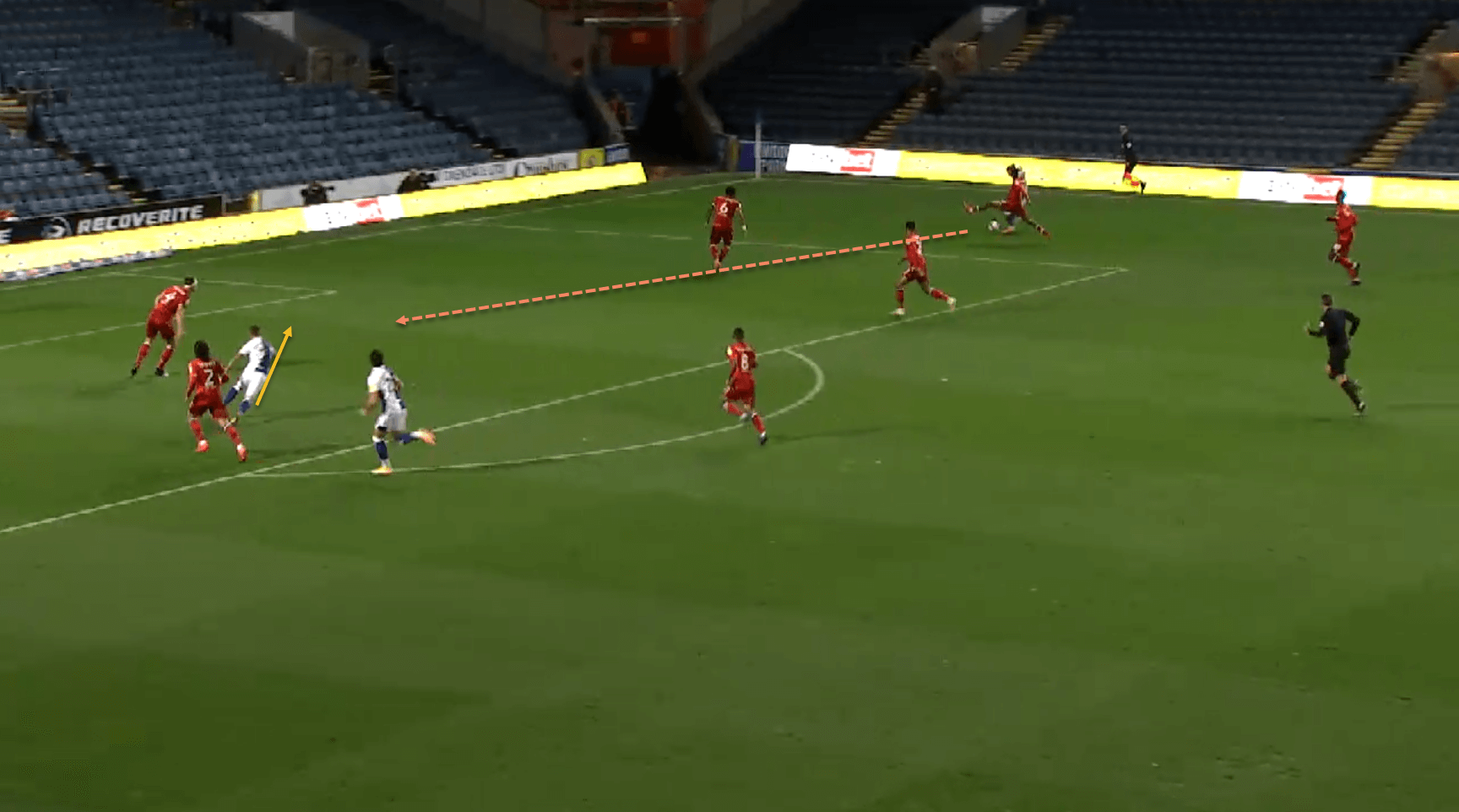
This is the case on the rare occasions when Elliott is on the left as well – he will go on the outside and cross low and hard into the box.
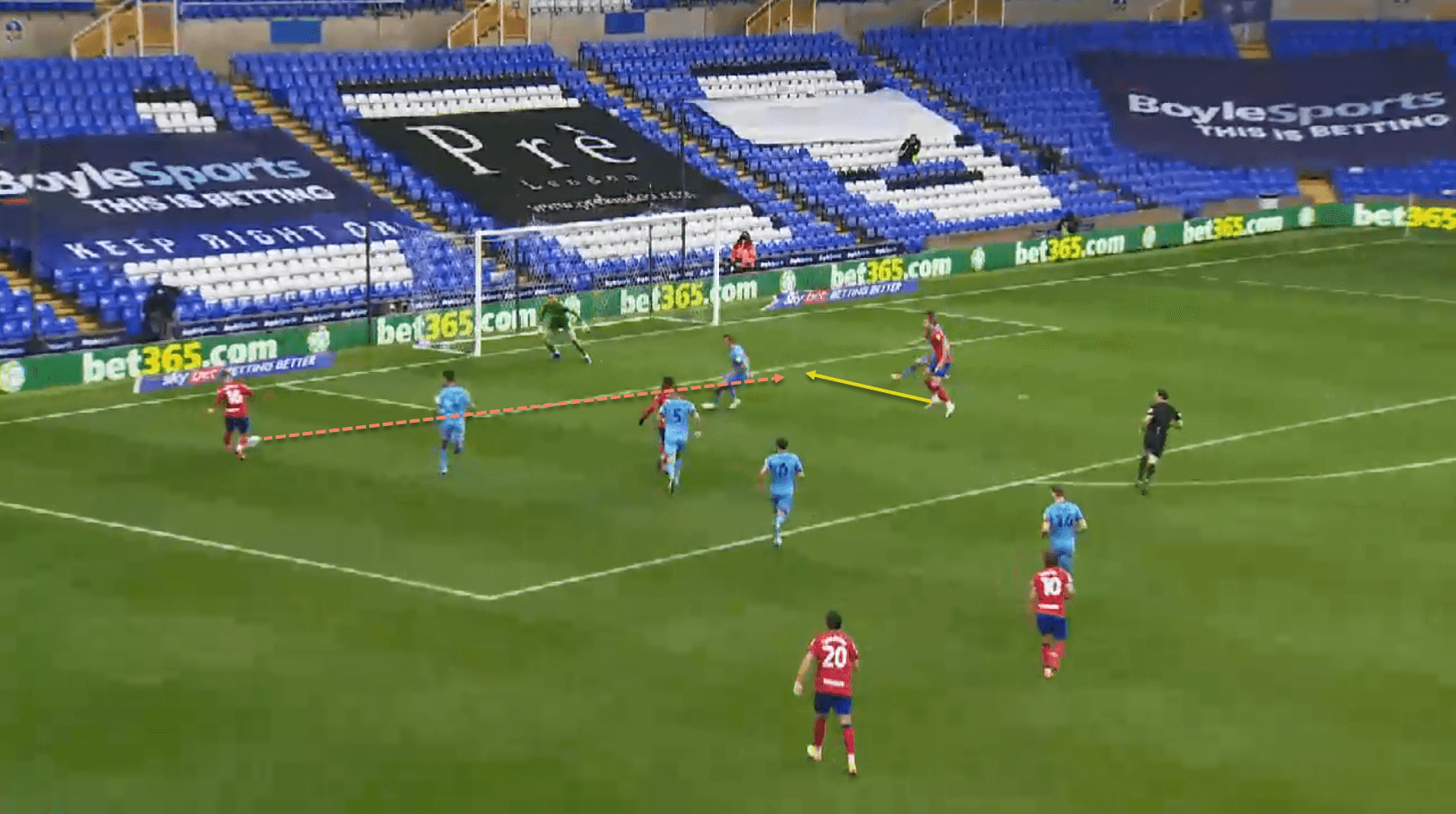
Both these images are instances where Elliott nabbed assists from such crosses, and thus even though he is not a very frequent crosser, he does have the ability to make a difference from such deliveries.
Movement
Elliott usually comes short to receive the ball to feet, coming off the right flank to receive and turn infield. We have already seen the range and variety of his passing from those positions, but he is also capable of dashing in behind via quick combinations with teammates.
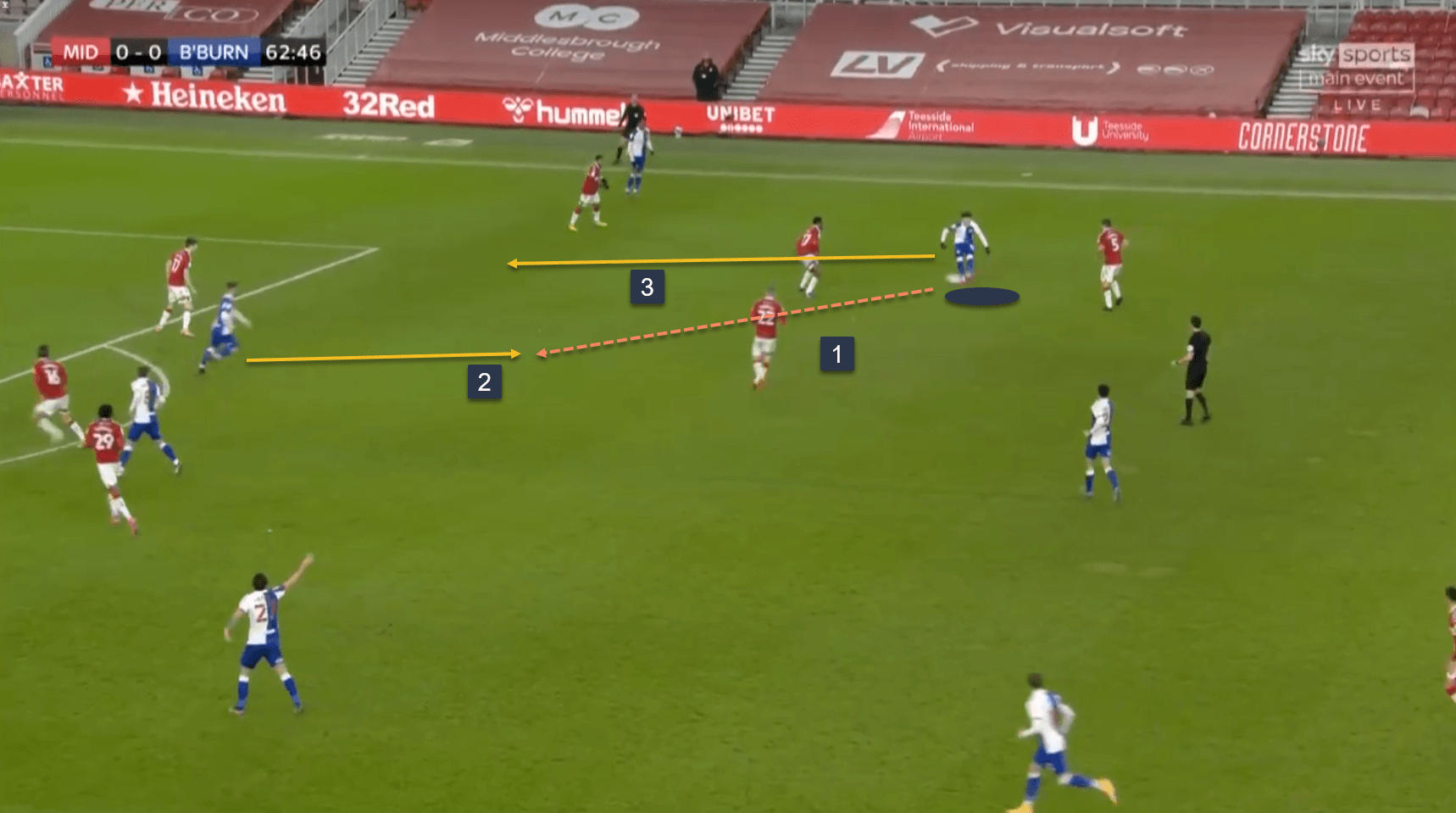
Here, Elliott plays a quick pass into his teammate’s feet and immediately makes a run behind and beyond his marker.
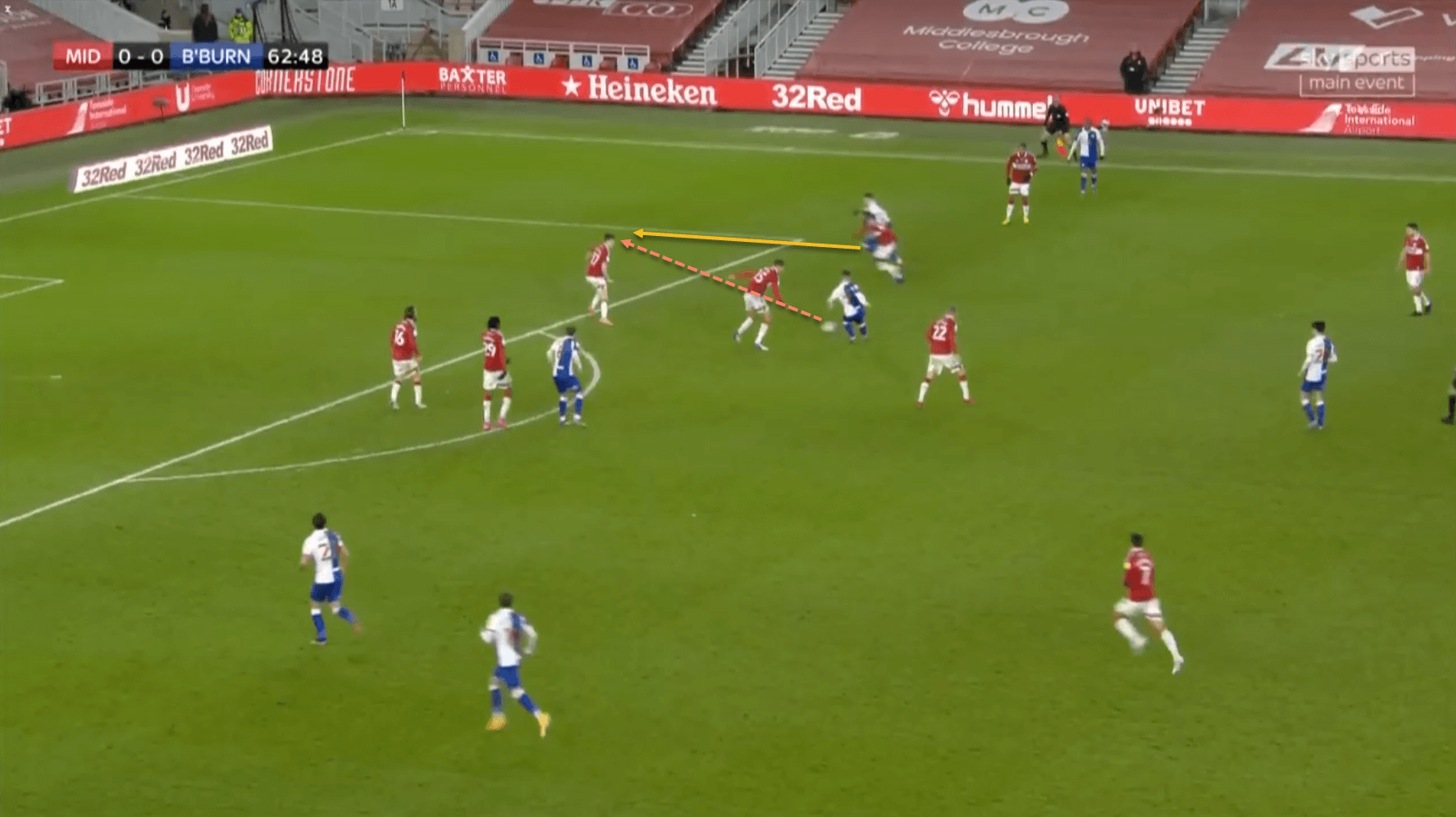
While not being the most rapid, he has managed to get ahead of his marker, and is able to run onto his teammate’s release pass in behind…
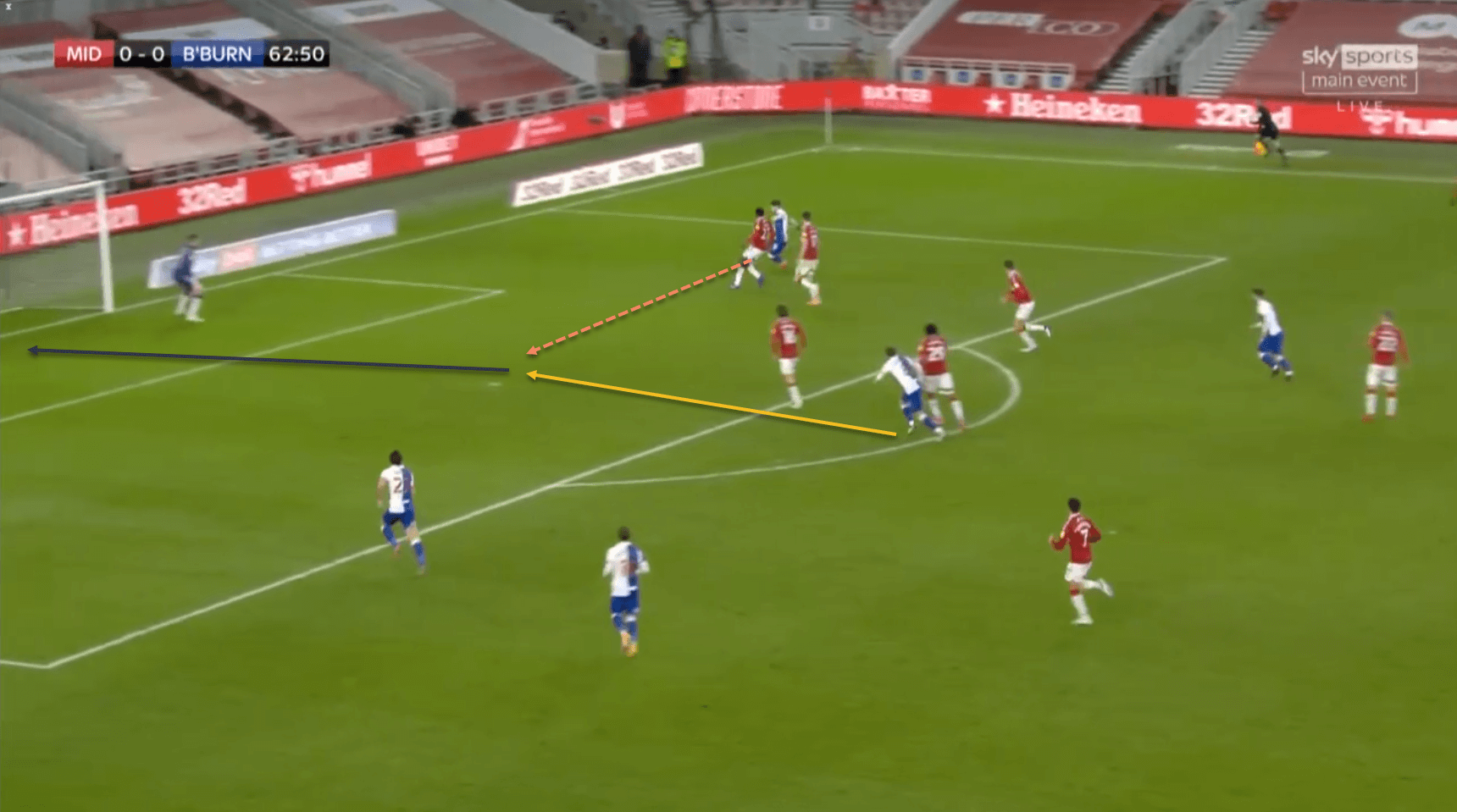
…from where he sends in a low drilled cross into the box for his teammate to convert.
Conclusion
Harvey Elliott has been one of the standout attacking players in the Championship this season, and his exploits are even more impressive given that he has only just turned 18 years old. The winger will be looking to end the season strongly in order to make a positive impression at his parent club, where there could be a squad spot available for him next season. We believe that he is stylistically quite similar to Xherdan Shaqiri, to go with the obvious physical similarities, but he can have a bigger impact than the Swiss international, so it could be that Elliott takes his spot in the Liverpool squad next season.

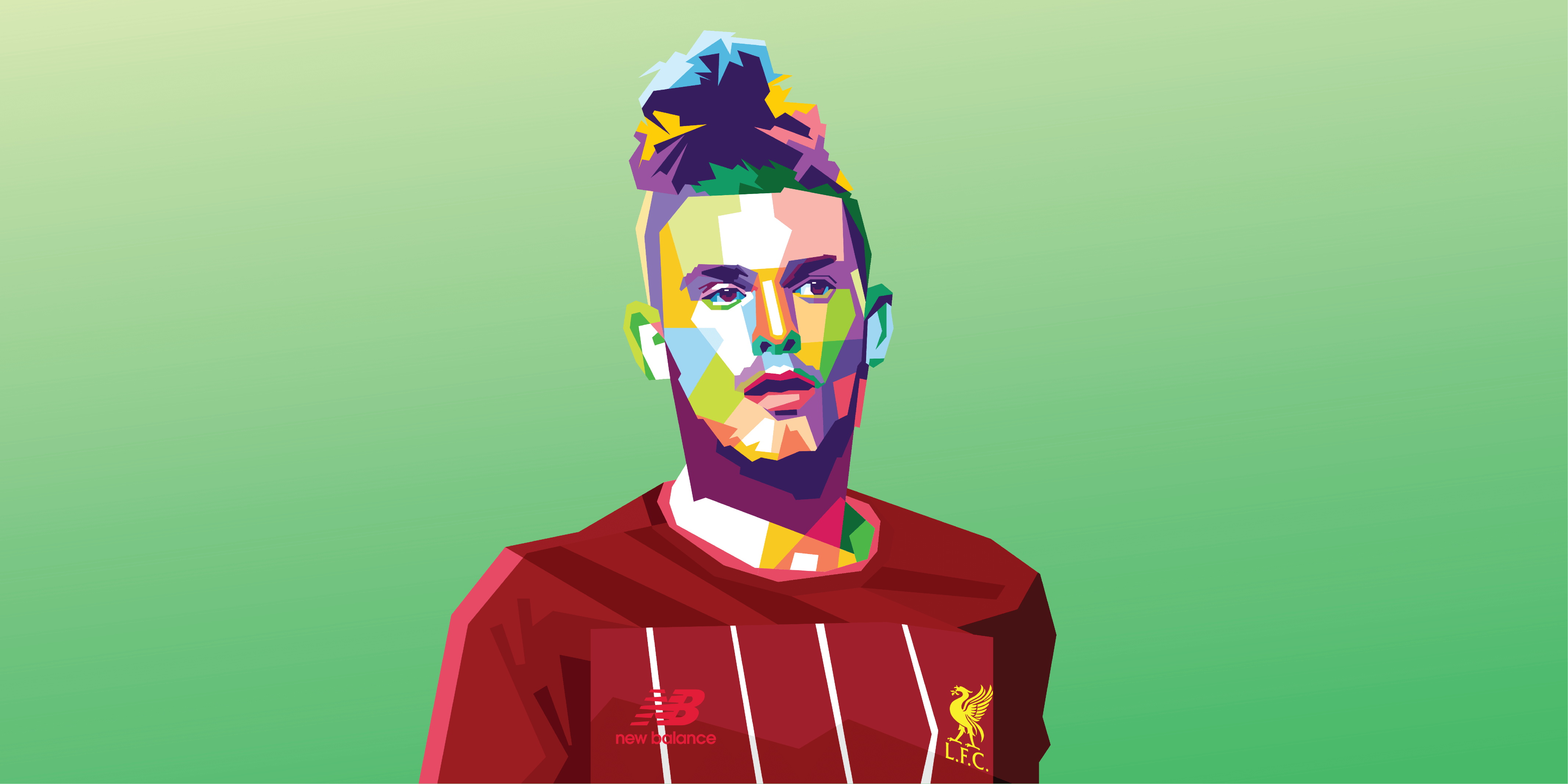



Comments